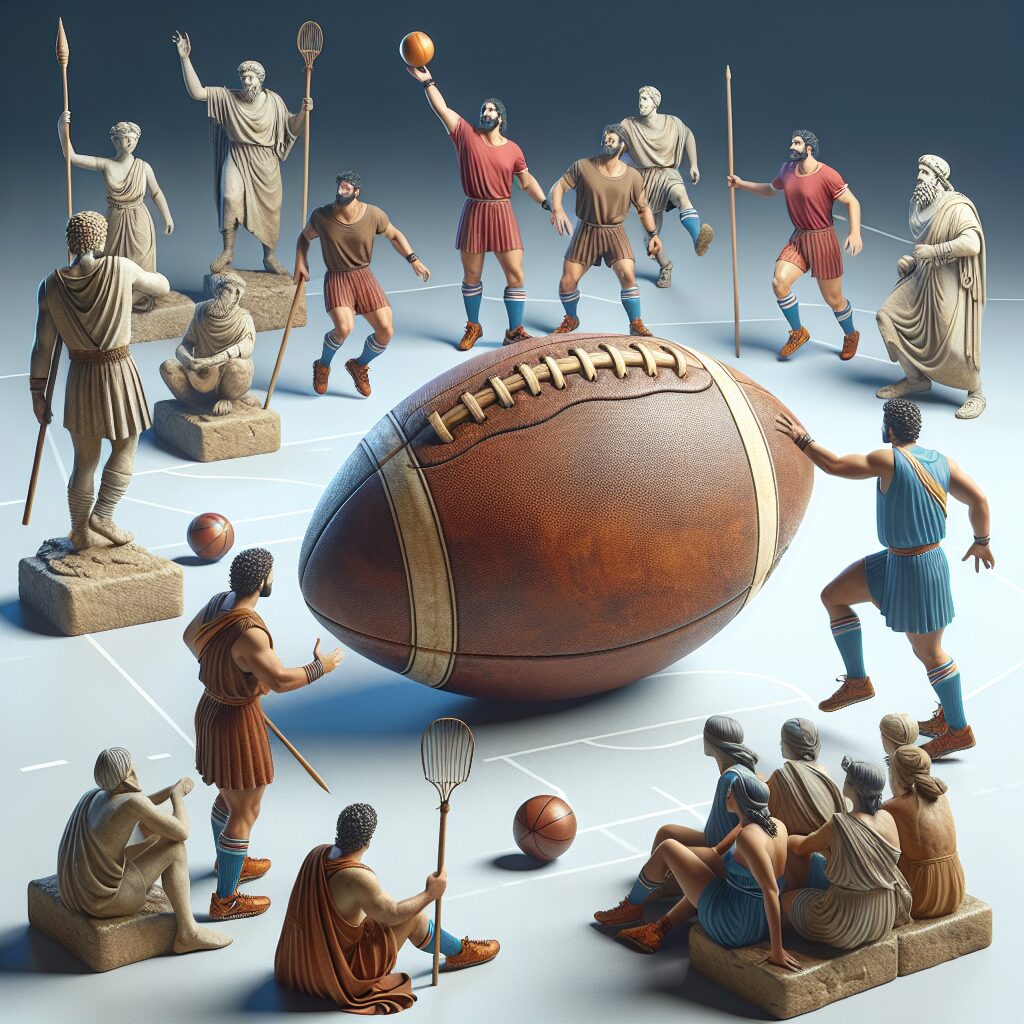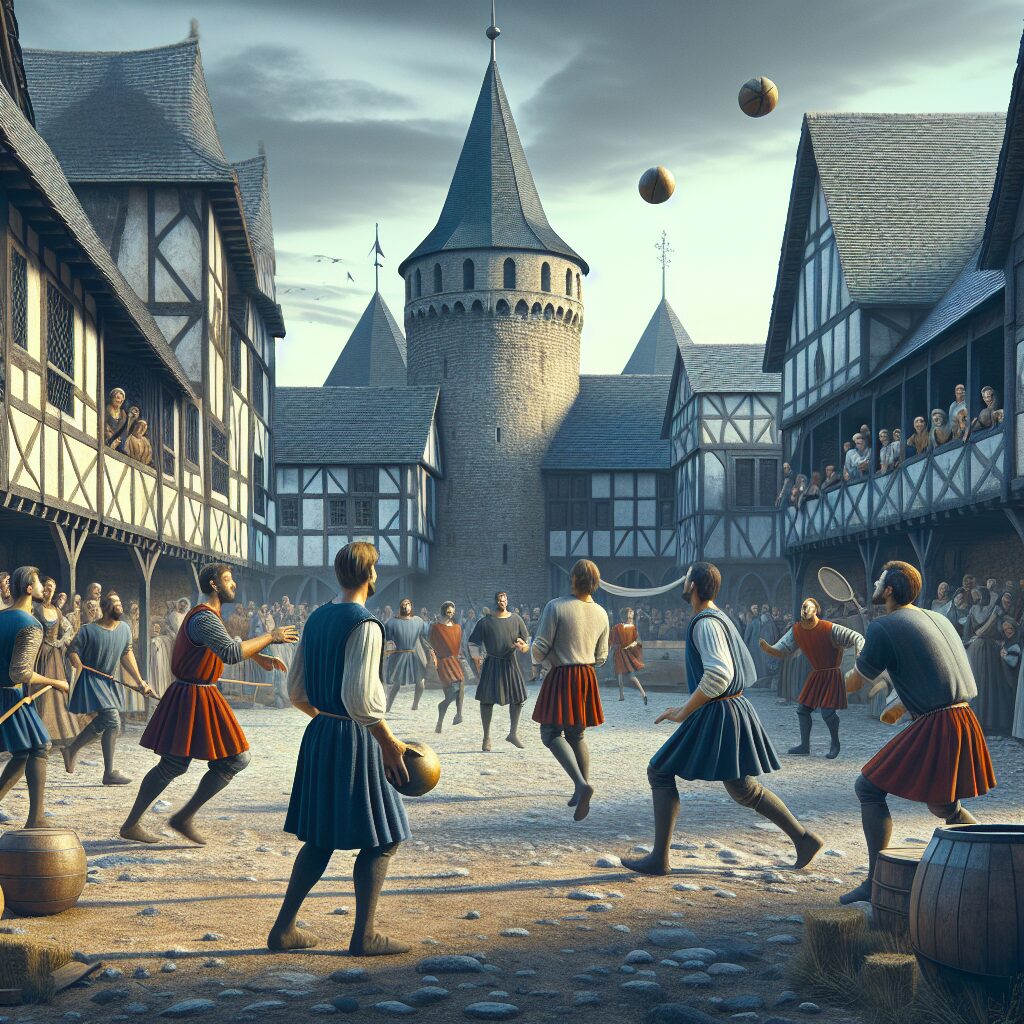Unearthing Ancient Ball Sports
Ball sports have been an integral part of human societies throughout history, with ancient civilizations having their own unique variations. From ancient Mesoamerica to ancient Egypt, ball sports played a prominent role in social, cultural, and religious activities. These sports involved using a ball made from various materials like rubber, animal bladders, or even human skulls. What makes these ancient ball sports intriguing is not only their historical significance but also their impact on society and the fascinating features they offered.
One such impact of ancient ball sports was their ability to bring people together and foster a sense of community. In ancient Mesoamerica, for example, playing ball sports was more than just a recreational activity; it was a spiritual and social event. These sports were often played in grand arenas with a significant audience in attendance. The games served as a platform for social interaction, communication, and the resolution of conflicts. They were also linked to religious rituals and offerings, signifying their importance in the spiritual realm.
Moving forward, understanding the unique features of these ancient ball sports can provide valuable insights into the development of modern sports and their cultural significance. In the coming sections, we will explore key aspects of ancient ball sports, including the rules and techniques, the societal and cultural impact, and their intricate connection with religion and spirituality. By unearthing the historical roots of ball sports, we can appreciate their evolution and recognize the enduring influence they have had on human societies across time.
Key Takeaways
1. Ancient ball sports were diverse and played around the world, as evidence from archaeological findings suggests the existence of various ball games in different cultures.
2. Researchers have discovered evidence of ancient ball sports dating back thousands of years, such as a game called Mesoamerican ballgame which was played in what is now Mexico.
3. The discovery of an ancient ball court in Guatemala reveals the importance of ball sports in Mayan culture, with the game potentially having significant social and ritualistic significance.
4. The potential for ball sports to have served as a form of exercise, recreational activity, and entertainment for ancient societies highlights the universality and enduring appeal of such games.
5. By analyzing ancient ball sports, researchers gain valuable insights into the lifestyles, values, and social structures of past civilizations, shedding light on the historical and cultural significance of these games.
What Can We Learn from Unearthing Ancient Ball Sports?
Origin of Ancient Ball Sports
Ancient ball sports have been a part of human civilization for thousands of years. From Mesoamerican ballgames like Ulama to Chinese Cuju, these sports have deep historical roots. Understanding the origin and development of these sports provides valuable insights into the cultures that cherished them.
Historical Significance
Unearthing artifacts and deciphering ancient texts related to ball sports offer a window into the past. These sports were not merely recreational activities but often had social, political, or religious significance. Exploring the historical context of ancient ball sports helps us understand the role they played in ancient societies.
Gameplay and Rules
Studying ancient ball sports allows us to uncover their gameplay mechanics and rules. Through archaeological findings and written accounts, we can decipher how these sports were played. This knowledge helps us compare ancient ball sports to their modern counterparts and trace the evolution of games throughout history.
Symbolism and Rituals
Ancient ball sports were often intertwined with symbolism and rituals. They were used as a means of communication, storytelling, or even as a representation of cosmic events. By delving into these symbolic aspects of ancient ball sports, we gain a deeper understanding of the cultural and spiritual beliefs of ancient civilizations.
Social Dynamics and Community
The practice of ancient ball sports involved gathering people together, fostering social bonds, and encouraging friendly competition. These sports were also used as a way to resolve disputes or show prowess. Analyzing the social dynamics and community aspects of ancient ball sports sheds light on the importance of communal activities and sporting events in ancient societies.
Impact on Modern Sports
Unearthing the origins and characteristics of ancient ball sports provides inspiration and insight for modern sports. Many elements found in contemporary games can be traced back to the practices of our ancestors. By exploring ancient ball sports, we can identify the influences that have shaped the sports we enjoy today.
Preserving Cultural Heritage
Studying and unearthing ancient ball sports contribute to the preservation of cultural heritage. By understanding the significance of these sports, their rules, and their cultural contexts, we can ensure their legacy is not lost to time. This knowledge allows us to appreciate the diversity and richness of human history.
6 Tips for Unearthing Ancient Ball Sports
- Consult archaeological research journals and publications dedicated to sports history.
- Visit museums and exhibitions featuring ancient sporting artifacts.
- Join academic or enthusiast forums dedicated to the study of ancient sports.
- Engage with experts and scholars in the field through conferences or online discussions.
- Develop language skills to access and interpret ancient texts related to ball sports.
- Collaborate with archaeologists and historians to conduct field research at relevant ancient sites.
FAQ
1. What are ancient ball sports?
Ancient ball sports refer to traditional sports that were played in civilizations centuries ago. These sports were often recreational activities involving a ball and various forms of gameplay.
2. Which ancient civilizations played ball sports?
Many ancient civilizations engaged in ball sports, including the Mayans, Aztecs, Egyptians, Greeks, and Romans. Each civilization had its own variations and rules for these sports.
3. What was the significance of ball sports in ancient cultures?
Ball sports held cultural and symbolic significance in ancient societies. They were often associated with religious rituals, social gatherings, and even political events. These sports served as a means of entertainment, building unity, and showcasing physical prowess.
4. What were the different types of ancient ball sports?
Ancient ball sports encompassed a wide range of games. Some popular examples include the Mesoamerican ballgame, Episkyros (ancient Greek ball game), Harpastum (Roman ball game), and Cuju (Chinese ball game).
5. Were ancient ball sports solely recreational activities?
Ancient ball sports varied in their purpose. While some were primarily recreational, others had deeper cultural, religious, or military significance. For instance, ball games were sometimes used as training exercises for warriors in ancient civilizations.
6. Do any ancient ball sports still exist today?
Yes, some ancient ball sports have survived to this day. For example, Ulama is a modern version of the Mesoamerican ballgame, still played in certain regions of Mexico. Other ancient ball sports have influenced modern-day sports, such as soccer and rugby.
7. How were ancient ball sports played?
The rules and gameplay of ancient ball sports varied depending on the civilization. Generally, players aimed to propel a ball using different body parts or tools, while following specific rules regarding scoring, boundaries, and team dynamics.
8. Were ancient ball sports played worldwide?
Ancient ball sports were not universally played worldwide. They were more prevalent in specific regions and cultures, reflecting the diversity and uniqueness of ancient sporting traditions.
9. Are there any archaeological findings related to ancient ball sports?
Yes, archaeologists have discovered various artifacts, murals, and written records related to ancient ball sports. These findings provide valuable insights into the history, rules, and cultural significance of these sports.
10. How can we learn more about ancient ball sports?
To delve deeper into the world of ancient ball sports, one can explore academic research, visit museums with relevant exhibits, or engage in discussions with experts in archaeology, anthropology, and ancient sports history.
Final Thoughts
Unearthing ancient ball sports allows us to connect with the rich sporting traditions of our ancestors. These sports provide a fascinating glimpse into the past, shedding light on the diverse ways in which ancient civilizations entertained themselves, built communities, and developed their physical abilities. Exploring the history and significance of these sports can help us appreciate the cultural heritage they represent and foster a greater understanding of our shared human history.
As we unravel the mysteries of ancient ball sports, we also recognize the enduring influence they have had on modern sports. The techniques, rules, and competitive spirit present in ancient games continue to shape the way we play and enjoy sports today. By studying these ancient sports, we gain a deeper appreciation for the evolution of sportsmanship and athleticism throughout the ages, bridging the gap between ancient civilizations and our contemporary sports culture.




